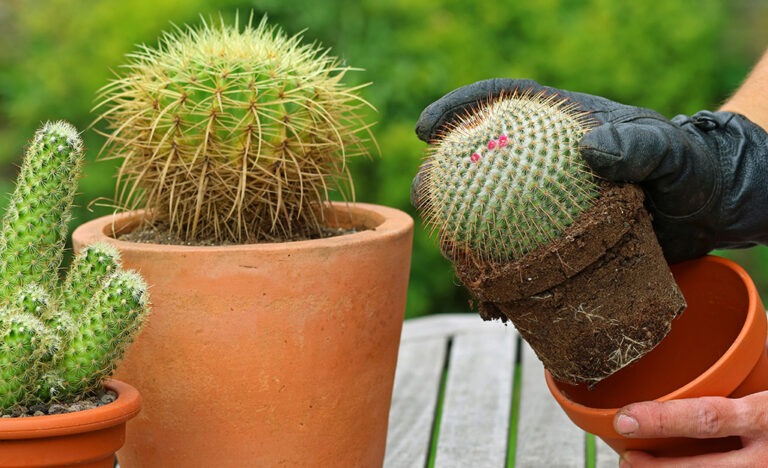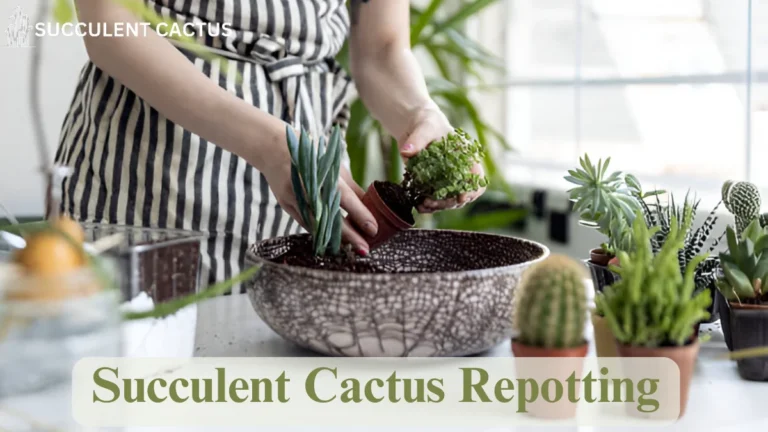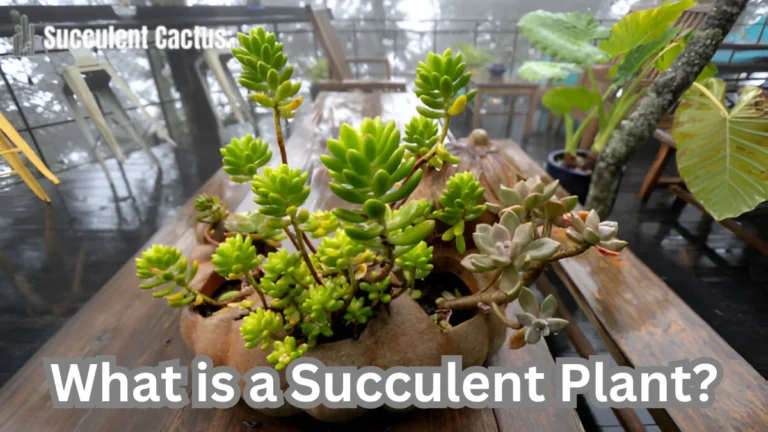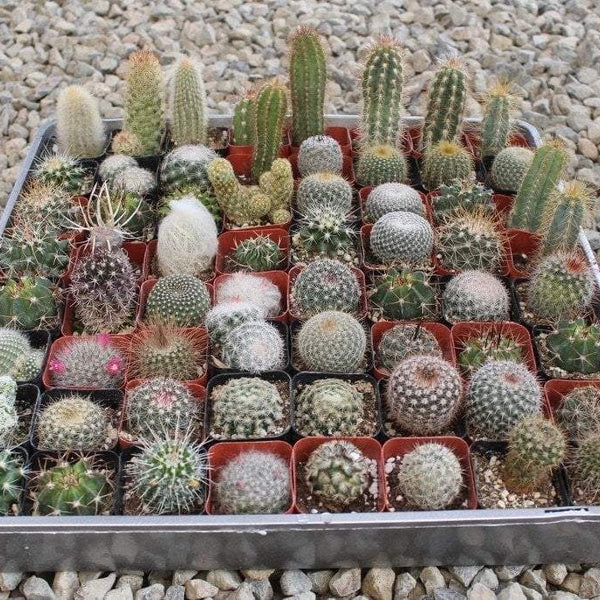Everything You Need to Know About Succulent Cactus Plants
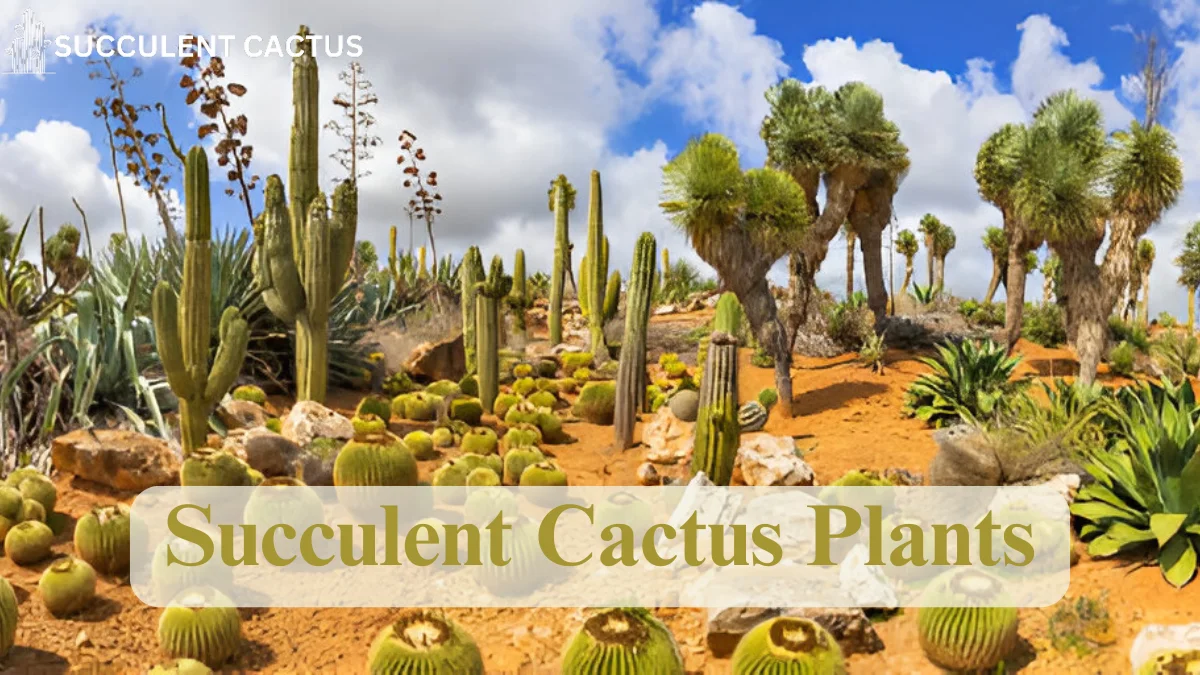
Succulent cactus plants are fascinating additions to gardens, indoor spaces, and landscaping projects. They are not only visually appealing but also easy to care for, making them perfect for beginners and experienced gardeners alike. In this blog, we’ll explore the unique features, types, care tips, and uses of these remarkable plants while addressing the common questions people have about them. Let’s dive in!
What Are Succulent Cactus Plants?
Succulent cactus plants belong to the broader category of succulents, which are plants that store water in their leaves, stems, or roots to survive in arid environments. Cacti, as a subgroup of succulents, are especially adapted to thrive in dry conditions.
Defining Features of Succulent Cactus Plants
Succulent cacti have unique characteristics that set them apart from other plants:
- Water Storage: They have thick, fleshy tissues designed to retain water for extended periods.
- Spines Instead of Leaves: Most cacti feature spines, which help reduce water loss and offer protection from herbivores.
- Photosynthesis in Stems: Unlike other plants, cacti perform photosynthesis primarily in their stems, which are green and often ribbed or ridged.
How Cactus Plants Differ from Other Succulents
While all cacti are succulents, not all succulents are cacti. The defining characteristic of cacti is the presence of areoles—small, cushion-like structures from which spines, flowers, and new growth emerge. This is a key feature that distinguishes cacti from other succulent plants.
Native Habitats of Succulent Cactus Plants
Succulent cacti are native to the Americas, where they are found in a variety of environments, from deserts to tropical rainforests. Some species, like the saguaro cactus, are iconic symbols of the arid landscapes of the southwestern United States.
Popular Types of Succulent Cactus Plants
There is a wide variety of succulent cacti, each with its own unique appearance, size, and growing requirements. Here are some of the most popular types:
Barrel Cacti
Barrel cacti are rounded, spiny plants that often grow in clusters. They are known for their ribbed appearance and bright flowers.
- Golden Barrel Cactus (Echinocactus grusonii): A striking cactus with golden-yellow spines, perfect for landscaping.
- Fishhook Barrel Cactus: Named for its curved spines, this cactus produces vibrant blooms in shades of yellow and orange.
Columnar Cacti
Columnar cacti are tall, upright plants that can grow to impressive heights. They are commonly used as focal points in gardens.
- Saguaro Cactus (Carnegiea gigantea): An iconic species native to the Sonoran Desert, known for its towering height and arm-like branches.
- Organ Pipe Cactus (Stenocereus thurberi): A multi-stemmed cactus resembling a pipe organ, often found in desert landscapes.
Epiphytic Cacti
Epiphytic cacti grow on trees and rocks rather than in soil. They are commonly found in tropical rainforests and have a unique, trailing growth habit.
- Christmas Cactus (Schlumbergera): A popular indoor plant that produces colorful flowers during the holiday season.
- Easter Cactus (Hatiora): Similar to the Christmas cactus, but blooms in spring with vibrant flowers.
Benefits of Growing Succulent Cactus Plants
Succulent cacti offer a range of benefits that make them a valuable addition to any home or garden.
Low Maintenance
Cactus plants are incredibly easy to care for, requiring minimal attention compared to other houseplants.
- Watering Needs: They require infrequent watering, making them ideal for busy individuals or those new to gardening.
- Durability: Cacti are resilient and can survive neglect better than most plants.
Air Purification
Like other houseplants, cacti contribute to improving indoor air quality by removing toxins and releasing oxygen.
- Nighttime Oxygen Release: Unlike most plants, some cacti release oxygen at night, making them perfect for bedrooms.
- Humidity Control: Cacti can also help maintain healthy indoor humidity levels.
Aesthetic Appeal
Cacti are visually striking and can enhance the appearance of any space.
- Variety: With their diverse shapes, colors, and sizes, cacti can complement any design aesthetic.
- Flowers: Many cacti produce stunning blooms, adding a pop of color to your home or garden.
How to Choose the Right Succulent Cactus Plant
Selecting the right cactus plant depends on your specific needs, preferences, and growing conditions.
Consider Your Environment
The first step in choosing a cactus is to assess your environment:
- Light: Does your space receive ample sunlight, or is it more shaded? Some cacti, like the saguaro, thrive in full sun, while others, like the Christmas cactus, prefer indirect light.
- Temperature: Ensure that the cactus you choose can tolerate the temperatures in your region or home.
Indoor vs. Outdoor Cacti
Determine whether you want a cactus for indoor decoration or outdoor landscaping:
- Indoor Cacti: Smaller species, such as the moon cactus or bunny ear cactus, are great for tabletops and windowsills.
- Outdoor Cacti: Larger species, like the golden barrel or prickly pear, are ideal for gardens and landscapes.
Personal Aesthetic Preferences
Choose a cactus that aligns with your personal style and preferences:
- Spiky vs. Smooth: Some cacti, like the old man cactus, have soft, hair-like spines, while others, like the golden barrel, have sharp, rigid spines.
- Color: Look for cacti with vibrant spines, unique patterns, or colorful flowers.
Caring for Succulent Cactus Plants
Proper care is essential to keep your succulent cactus plants healthy and thriving. Although these plants are low-maintenance, following the right practices ensures they remain beautiful and vibrant.
Watering Tips for Cacti
Watering is one of the most crucial aspects of caring for cacti. Overwatering is the primary cause of problems for these plants.
- Frequency: Water your cactus only when the soil is completely dry. For most indoor cacti, this means every 2–3 weeks.
- Seasonal Needs: Cacti require more water during the growing season (spring and summer) and significantly less during the dormant period (fall and winter).
- Drainage: Always use pots with drainage holes to prevent water from pooling at the bottom, which can lead to root rot.
Light Requirements for Succulent Cacti
Providing the right amount of light is essential for the health of your cactus.
- Sunlight Needs: Most cacti thrive in bright, direct sunlight for 4–6 hours daily. Place them in south-facing windows or sunny outdoor spots.
- Avoid Overexposure: Protect your cactus from intense afternoon sun, especially in very hot climates, to prevent sunburn.
- Low-Light Adaptation: Some species, like the Christmas cactus, can tolerate indirect or low light conditions.
Soil and Potting Mix for Cactus Plants
The right soil is critical to ensure proper drainage and prevent waterlogging.
- Soil Type: Use a specialized cactus and succulent mix, or create your own by mixing regular potting soil with sand and perlite.
- pH Levels: Cacti prefer slightly acidic to neutral soil (pH 6.0–7.0).
- Repotting: Repot your cactus every 2–3 years to provide fresh soil and accommodate growth.
Common Problems and Solutions for Cactus Plants
Despite their resilience, succulent cactus plants can encounter issues. Identifying and addressing these problems early is key to maintaining their health.
Overwatering and Root Rot
Overwatering is the most common issue faced by cactus owners.
- Signs of Overwatering: Look for mushy, discolored stems and a foul smell coming from the soil.
- Solution: Remove the cactus from its pot, trim any rotting roots, and repot it in fresh, dry soil. Reduce watering frequency going forward.
Pests and Diseases
Cacti are susceptible to pests like mealybugs, spider mites, and scale insects.
- Identifying Pests: Look for white cottony spots, webbing, or discolored patches on the plant.
- Treatment: Use insecticidal soap, neem oil, or rubbing alcohol to remove pests. Ensure good airflow around your cactus to prevent infestations.
Sunburn and Etiolation
Improper lighting can lead to sunburn or etiolation (stretching).
- Sunburn Symptoms: Brown or white scorched patches appear on the plant.
- Etiolation Symptoms: The plant grows tall and leggy with pale, weak stems.
- Solutions: Adjust the plant’s location to provide appropriate lighting conditions.
Propagating Succulent Cactus Plants
Propagation is a fun and rewarding way to grow new plants from your existing cacti.
Propagating from Cuttings
Many cacti can be propagated using stem or leaf cuttings.
- Steps:
- Use a clean, sharp knife to cut a healthy piece from the parent plant.
- Allow the cutting to dry and callous over for a few days.
- Plant the cutting in well-draining soil and water sparingly until roots develop.
Propagating from Offsets
Offsets, or “pups,” are small plants that grow at the base of the parent cactus.
- Steps:
- Gently remove the offsets using a knife or by hand.
- Let the offsets dry for a few days before planting them in a separate pot.
- Water lightly until they establish roots.
Propagating from Seeds
Growing cacti from seeds is more time-consuming but can be rewarding.
- Steps:
- Sow seeds in a shallow tray with cactus soil mix.
- Cover the tray with plastic to maintain humidity and warmth.
- Place the tray in a bright, warm spot and moisten the soil until the seeds germinate.
Decorating with Succulent Cactus Plants
Cactus plants can enhance the aesthetic appeal of any space, indoors or outdoors.
Indoor Decorations
Cacti are popular choices for decorating homes and offices.
- Tabletop Displays: Use small cacti in decorative pots as centerpieces.
- Terrariums: Combine cacti with other succulents in glass containers for a modern look.
- Vertical Gardens: Create a living wall with mounted cacti for a striking feature.
Outdoor Landscaping
Succulent cactus plants are ideal for xeriscaping and other water-wise garden designs.
- Rock Gardens: Pair cacti with stones and gravel for a natural, desert-like appearance.
- Pathway Borders: Using cacti to line garden paths creates a structured, low-maintenance design.
- Focal Points: Plant large species like barrel cacti as eye-catching centerpieces.
Seasonal Displays
Some cacti, like the Christmas and Easter cacti, are perfect for seasonal decorations due to their festive blooms.
The Cultural Significance of Cacti
Cactus plants hold cultural and symbolic significance in various parts of the world.
Symbolism
Cacti are often associated with endurance and protection.
- Native American Cultures: Cacti symbolize warmth and maternal love.
- Modern Symbolism: They represent resilience, strength, and adaptability.
Uses in Traditional Medicine
Cacti have been used for centuries in traditional medicine.
- Prickly Pear: Known for its anti-inflammatory and antioxidant properties.
- Aloe Vera (Technically a Succulent): Widely used for its soothing and healing benefits.
Cacti in Art and Literature
These plants have inspired artists and writers worldwide.
- Paintings: Artists often depict cacti in desert landscapes.
- Literature: Cacti are featured in poems and stories as symbols of survival.
Table: Comparison of Common Succulent Cactus Plants
| Cactus Type | Light Requirement | Water Needs | Special Features |
| Golden Barrel | Full sun | Low | Vibrant yellow spines |
| Christmas Cactus | Indirect light | Moderate | Bright holiday blooms |
| Saguaro | Full sun | Low | Iconic desert symbol |
| Prickly Pear | Full sun | Low to moderate | Edible fruit and pads |
| Fishhook Barrel | Full sun | Low | Curved spines, colorful blooms |
Environmental Benefits of Succulent Cactus Plants
Cactus plants are aesthetically pleasing and contribute to the environment in several ways.
Role in Carbon Sequestration
Cacti absorb carbon dioxide during photosynthesis, especially at night, using Crassulacean Acid Metabolism (CAM).
- Unique Photosynthesis: Cacti open their stomata at night to reduce water loss while capturing CO2, making them ideal for arid environments.
- Impact: Large cacti, such as saguaros, can store significant amounts of CO2, helping reduce greenhouse gas levels.
Soil Stabilization and Erosion Control
Cacti are highly effective at stabilizing soil in arid and semi-arid regions.
- Root Systems: Their widespread, shallow roots anchor the soil, preventing erosion during heavy winds or rain.
- Restoration Projects: Cacti are often used in degraded lands to restore soil quality and biodiversity.
Support for Biodiversity
Cacti create habitats and food sources for numerous desert-dwelling species.
- Birds and Insects: Birds, like cactus wrens, build nests in cacti, while bees and butterflies feed on their flowers.
- Mammals: Animals such as bats rely on cacti fruits for sustenance.
How to Start a Succulent Cactus Plant Collection
Building a cactus collection can be an enjoyable and rewarding hobby for enthusiasts.
Choosing the Right Varieties
Start with beginner-friendly cacti before adding rare or exotic species to your collection.
- Beginner-Friendly Cacti: Golden barrel, Christmas cactus, and jade plant are great choices.
- Rare Varieties: Look for astrophytum, moon cactus, or lithops to add uniqueness to your collection.
- Research: Understand the care requirements of each species before purchasing.
Setting Up Your Cactus Collection
Organizing your collection can make it more visually appealing and easier to maintain.
- Display Ideas:
- Use tiered shelves to maximize space.
- Group similar species together for a cohesive look.
- Incorporate decorative pots for added style.
- Labeling: Use tags to identify each plant, noting their scientific name and care instructions.
Expanding Your Collection
Once you’ve mastered the basics, explore ways to grow and diversify your collection.
- Propagation: Use offsets, cuttings, or seeds from your existing plants to grow new ones.
- Local Nurseries: Visit cactus nurseries or succulent shows for new additions.
- Cactus Societies: Join organizations like the Cactus and Succulent Society of America to learn and connect with other enthusiasts.
FAQs
1. Are cacti and succulents the same? While all cacti are succulents, not all succulents are cacti. Cacti belong to the plant family Cactaceae, which is a subset of succulents.
2. How can I tell if a plant is a cactus or a succulent? Cacti have specialized structures called areoles, from which spines, flowers, or branches grow. Succulents without areoles are not cacti.
3. Can I use regular potting soil for cacti? Regular potting soil is often too dense for cacti. It is better to use a cactus-specific soil mix that ensures proper drainage.
4. What is the lifespan of a cactus? Cacti can live for decades, with some species, like the saguaro, living over 150 years in the wild.
5. Can succulent cacti grow in cold climates? Most cacti prefer warm, arid conditions, but some species, like the prickly pear, can survive frost and colder temperatures.
Conclusion
Succulent cactus plants offer beauty, practicality, and environmental benefits. Whether you’re a beginner or a seasoned gardener, these plants provide endless opportunities for creativity and learning. By incorporating them into your home or outdoor spaces, you can enjoy their resilience and charm for years to come. Embrace the joy of growing succulent cactus plants, and let their unique characteristics transform your space into a vibrant, low-maintenance haven.

